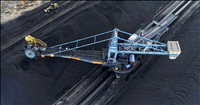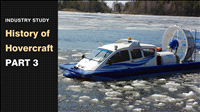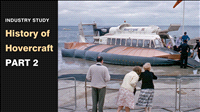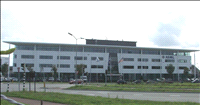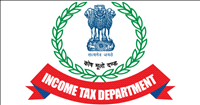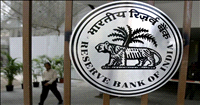Forecasting tourism demand
28 Mar 2007
With
the use of neural network based models, tourism demand
forecasting softwares provide ongoing, dynamic and adaptive
information management. By Dr Kaustubh Chokshi*,
CEO of UK-based Intelligent Business Systems.
 Before
September 11, 2001, no software system on earth could
have predicted the forthcoming global slump in tourism.
And immediately after that cataclysmic date, none was
required. The same could be said for the tsunami that
hit Asian coastlines in December 2004, albeit with largely
regional implications.
Before
September 11, 2001, no software system on earth could
have predicted the forthcoming global slump in tourism.
And immediately after that cataclysmic date, none was
required. The same could be said for the tsunami that
hit Asian coastlines in December 2004, albeit with largely
regional implications.
On an on-going basis, the tourism industry is affected by a wide range of fluctuating parameters of lesser proportions, all of which have a positive or negative impact on movements of tourists and their choice of destination. However, the degree of impact varies and is not easily quantifiable. Serious social conflicts, wars and economic crises are obvious influencers, but there could be a host of factors such as the price of oil or currency exchange rates that also have a bearing.
Wouldn''t anyone operating in the hospitality industry or tourism trade give their right arm to have a system that could take into consideration all these factors and come up with reasonably accurate prediction of tourist traffic for the approaching tourist season?
Obviously it would be impossible to develop such a system using traditional logic-based programs, given the non-linear nature of the interaction parameters and the possible outcomes. On the other hand, Artificial Intelligence technology and neural network architecture eminently fits the bill, and would be able to deliver an effective demand forecasting model that is as accurate as one could hope to get.
In fact, scientists from Intelligent Business Systems (the organisation that I head) worked along with researchers from a leading university in the UK to develop just such a tourism demand forecasting model for a prominent client. While I am not at liberty to divulge the specifics of the project, some of the concepts and considerations that went in to the building of the model should make for interesting reading.
First, any tourism demand forecasting model needs to monitor electronic newswire services, analyse the textual information they contain and extract events of relevance. Based on the extracted factual knowledge, the system should be able to predict potential variations in tourism demand in the country or region directly affected by the events, as well as in neighbouring regions. The realisation of such a system requires the deployment of various techniques from the field of Artificial Intelligence, including Natural Language Processing (text analysis and classification), and Time-series Processing and Forecasting.
Large amounts of ever-increasing unstructured electronic data exist in the form of databases, internet web pages, and newswire archives. This information has to be classified and organised, thus allowing consequent qualitative retrieval of the data as a potentially mineable resource of information.
Quantitative analysis of digital newswire information to derive useful classification of events has of course not been commercially available. If at all anything existed, it used techniques such as machine learning and decision trees, which were found to be adequate. Now, artificial neural networks have been successfully applied to the task of such text classification. This is due in part to recent advances in the appropriate scientific theories that underlie such approaches, and also the sheer increase in computational power that is available for data crunching.
Making actual "semantic" sense of the textual information is of great commercial and scientific interest. Semantic sense implies a more intelligent application of natural language processing techniques to the actual understanding of text rather than brute-force analysis and categorisation. Artificial neural networks have proved themselves to be the most accurate tool in this regard. As mentioned in previous articles in the series for domain-b, artificial neural networks have a computational approach to data analysis that more closely resembles the powerful abilities of the human brain. Neural networks importantly have the ability to learn existing information and adapt to new information. This makes neural networks more powerful than many machine-learning techniques such as those used within search engines like Google and Yahoo.
With the use of neural network based models, tourism demand forecasting software is able to provide an ongoing, dynamic and adaptive management of information; over time, further analysis can provide forecasts based on ongoing levels of stability / instability and other parameters at worldwide tourism destinations.
A neural network model can be optimised for non-linear data and time-series prediction. It integrates the various parameters culled from the data with traditional exogenous values; these values are usually employed in econometric tourism demand forecasting. The neural network learns the rules of these traditional exogenous values, as well as the impact of the current factors, making for robust and accurate forecasting.
The tourism industry is one that is most affected by the uncertainties of the prevailing social, political and economic conditions and the constantly changing geopolitical landscape. Obviously, if tourist traffic can be confidently predicted with a high degree of accuracy, one can plan for the influx (or lack of it) far more efficiently and cost-effectively. Organisations (or governments) that are better equipped for such predictions are more likely to succeed in the emerging global markets, whether in tourism or otherwise. And once again, it''s Artificial Intelligence that will make the difference.
* Dr Kaustubh Chokshi is CEO of Intelligent Business Systems (IBS), a UK-based AI Enterprise Solutions company, which has recently expanded into India. Dr Chokshi has a PhD in Artificial Intelligence from the University of Sunderland, UK.





